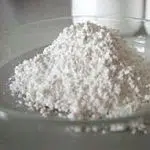Home » Sludge Stabilization
Sodimate provides custom-designed systems with complete from lime storage tanks to sludge processing and conveying screws. The solutions are adaptable to specific site requirements for storage and loading, transport and processing needs, and conveyor size.
Dewatered sludge is mixed with lime, preferably quick lime instead of hydrated lime, in order to increase their pH to 12 though killing pathogens and micro-organism. The addition of lime also increases the sludge dry material content as lime reacts with water and vapor is released.
A dry material content of 30% can be easily reached whatever the type of dewatering equipment used upstream.
Sludge and lime should be mixed intimately and homogeneously to ensure that each lime molecule reacts.
Sludge processed by a dewatering system, such as a centrifuge or belt press, is collected and conveyed to a sludge mixer. Powdered lime from the storage container (silo, hopper, or big bag stand) is also fed to the mixer, generating homogenous, stabilized biosolids (Class B). The Sodimate sludge mixer does not alter sludge structure, contrary to the other types of mixing systems.

Sodimate proposes alternative storage solutions adapted to the customer’s need, depending on the product consumption and its procurement difficulties : silo, Big Bag Stand or sack tip hopper.
The pre liming sludge stabilization is usually used for 2 types of application
A lime milk made of hydrated lime (lime milk preparation tank) or quick lime (lime slaking unit) is injected into the conditioning tank allowing increased dewatering performances.
The use of quick lime which has a “delayed reactivity” allows a pre liming sludge treatment with centrifuges, whereas centrifuges are generally associated with post liming application. The delayed reactivity quick lime is discharged, dosed and injected into a maturing tank where it is mixed together with liquid sludge before being sent to the centrifuge.
The centrifuged sludge is transferred by screw conveyor and it is only once the sludge is discharged into the storage skips or the storage area that the lime starts its exothermic reaction.